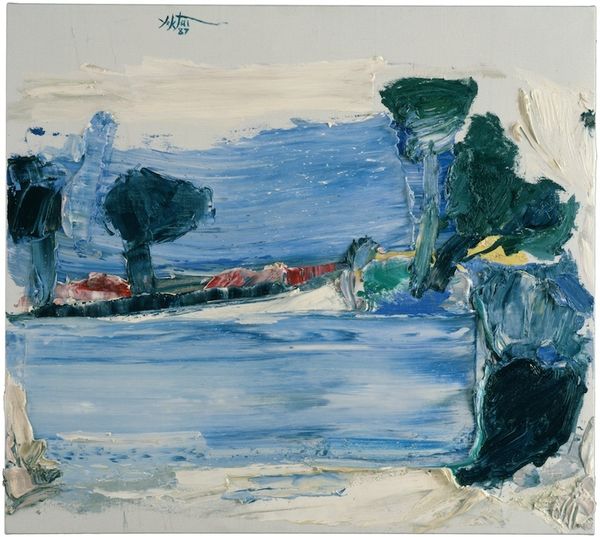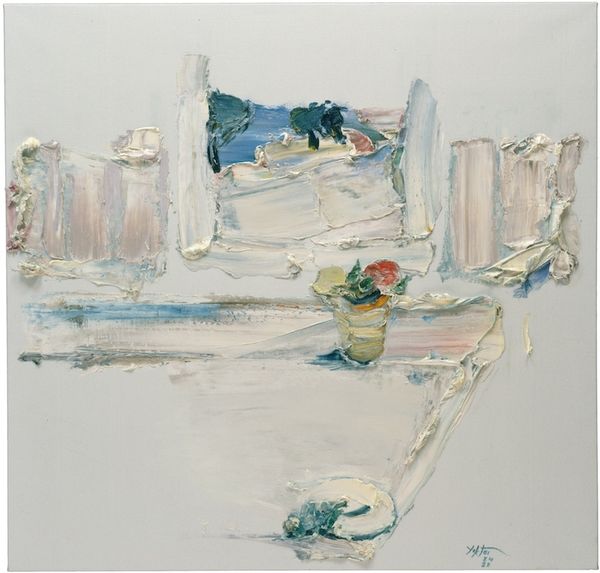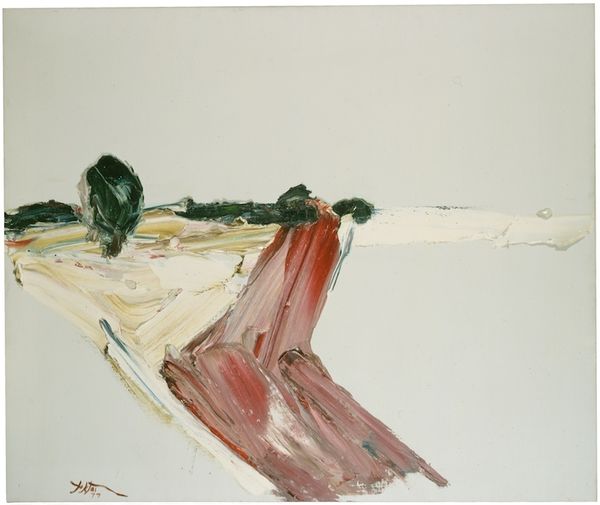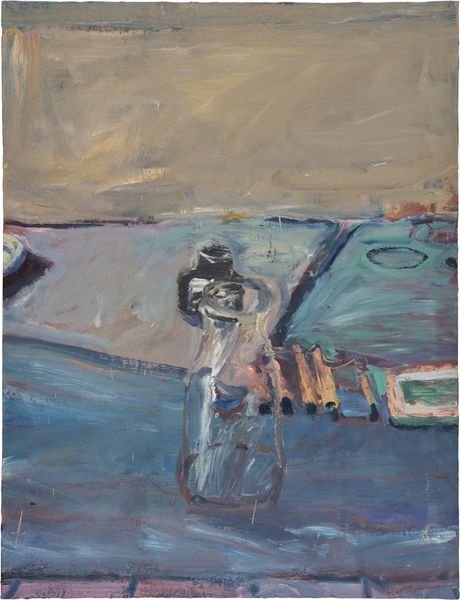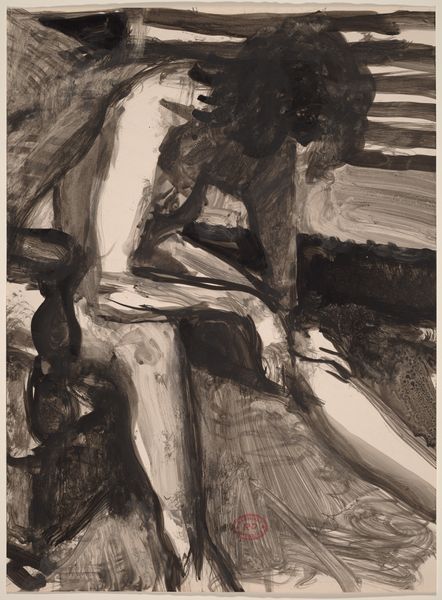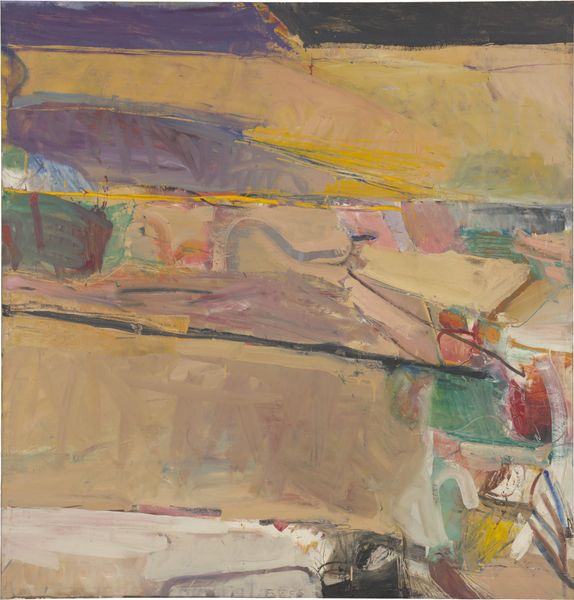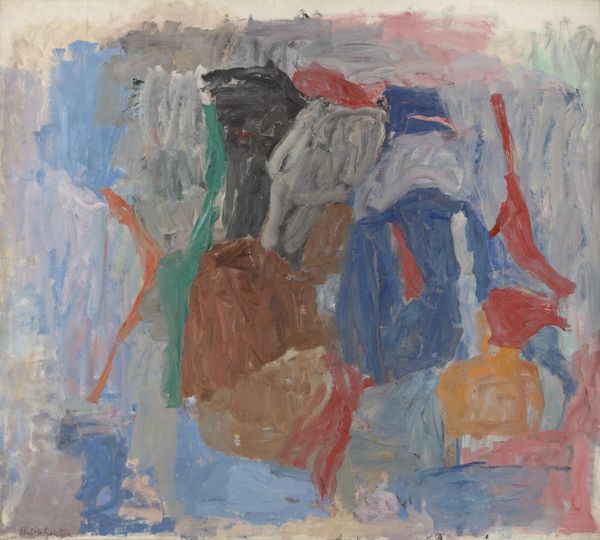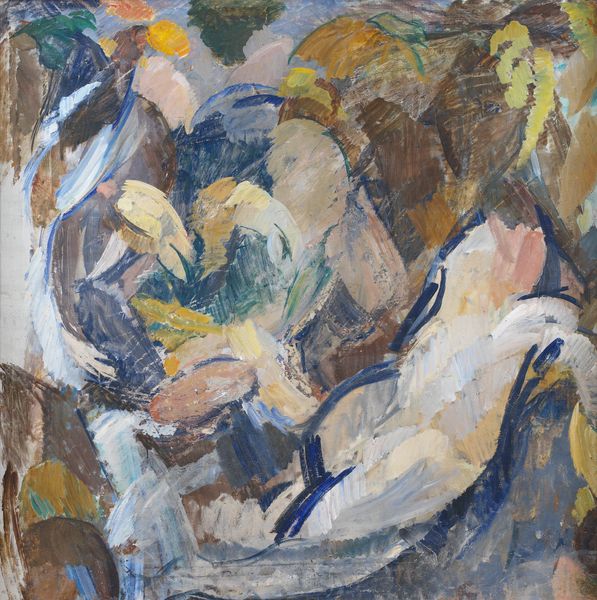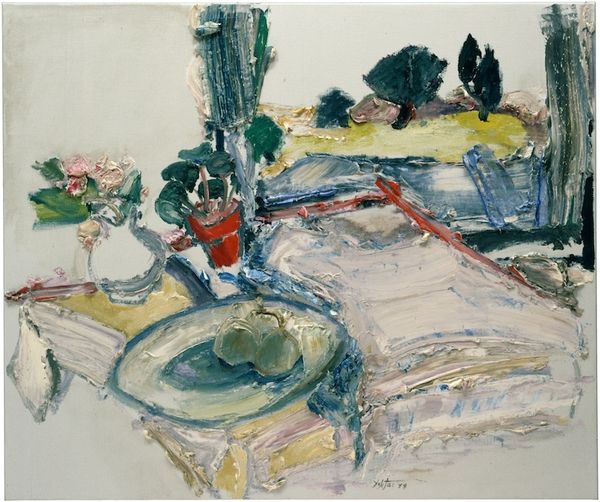
Copyright: Manoucher Yektai,Fair Use
Editor: Here we have Manoucher Yektai’s "Untitled" from 1983. It’s a small mixed-media painting, heavily impastoed, that almost feels sculptural. The texture really grabs my attention. How do you read a work like this? Curator: It's interesting to consider Yektai within the context of his time. A piece like this, created in 1983, is emerging during a period where there’s increasing institutional support for abstract expressionism, yet simultaneously a growing critique of its perceived elitism. The "matter-painting" aspect, with the thickly applied oil paint, can be seen as a physical assertion of the artist’s presence, their labor. Do you find it politically charged at all? Editor: Politically charged? I hadn't really thought about it that way, I was mainly focusing on the visual landscape aspects of it, or the influence of expressionism. Curator: Right. Think about the art world then, the market’s growing influence, the museum's role in validating certain art forms. Could this aggressive use of materials be a quiet rebellion against those forces, a claiming of artistic freedom outside the expected norms of, say, a polished gallery-ready piece? Editor: That's a great point, especially when you think about how galleries are influencing which type of works become popular and available, almost acting as a filter. I was just seeing this as an abstract landscape. Curator: The "landscape" element pulls us in, offering familiarity, while the abstraction pushes back, challenging easy interpretation. Does the scale – its relative smallness – play a role? Is it a deliberate intimacy, or something else? Editor: I guess its small size makes it more intimate, almost private in some way. I'm starting to appreciate how much the art world can impact a piece. Thank you. Curator: Indeed. And by considering these contextual layers, our understanding deepens and shapes our personal interpretation.
Comments
No comments
Be the first to comment and join the conversation on the ultimate creative platform.
